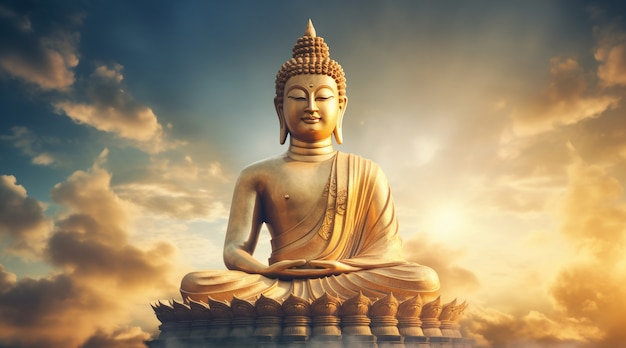

Some of the biggest myths about the Buddha are so widespread that you’ll find them in nearly every book on Buddhism. The issue is that most of these books just recycle what others have said without checking the facts, so these misconceptions have persisted for decades or even centuries.
Let’s set the record straight on some common myths. I’m not talking about myths like “The Buddha was a god” (he was a historical figure) or that he was fat (that’s actually Budai, a Chinese monk). No, I want to debunk beliefs that even many experienced Buddhists think are true because they’ve been repeated so often.
Here we go:
1. The Country Confusion:
People often say the Buddha was Indian, meaning he was born in a region that is now part of India. However, according to tradition, he was born in Lumbini, in the Sakyan country, which is actually in present-day Nepal. So, while he spent much of his life in what is now India, he was technically Nepalese.
2. The Name Game:
In the scriptures, the Buddha is named “Gotama.” Many think this was his family name, but it was probably his given name. We know the personal names of his family members, so it would be odd not to know his. The only places where “Siddhattha” (Pāli for Siddhartha) appears are in very late texts, added centuries after his death. In early texts, he mentions his family name as “Ādicca,” meaning “sun.” Given that Gotama was a Brahmin family name, it’s unlikely he had it. Thus, Gotama was likely his first name, and Ādicca his family name.
3. Not Born a Hindu:
There wasn’t a religion called Hinduism when the Buddha was born. Various religious traditions existed, with Brahminism being the most common. However, there’s no evidence the Buddha followed this Vedic tradition at any point in his life. The Sakyans, his people, even claimed superiority over Brahmins, making it unlikely they followed their practices.
4. The Prince Myth:
The Sakyans were governed by a council, not a king, making the Buddha’s father more like a senator. The idea of him being a prince likely arose as republics were swallowed by monarchies, leading people to assume things had always been that way. Additionally, religious traditions often elevate their founders’ statuses to attract followers, making it more appealing to say the Buddha was a prince.
5. The Four Sights:
The tale that the Buddha left home after seeing an old person, a sick person, a dead person, and a homeless wanderer is actually about a legendary former Buddha named Vipassi. The Buddha’s actual reason for leaving home was the widespread conflict he saw among people, which led him to seek a way to overcome suffering.
6. The Palace Life:
The scriptures mention the Buddha living in three “palaces,” but archaeological evidence in Kapilavastu suggests modest dwellings. The term for “palace” can also mean a stilt house, which aligns more closely with historical and archaeological findings.
7. The Midnight Departure:
Legends say the Buddha snuck out in the middle of the night without saying goodbye. However, scriptures indicate he said farewell to his parents. This narrative is less dramatic but more human. He likely spent considerable time discussing his desire to leave.
It’s crucial to hold our beliefs lightly and be open to new evidence. If you found some notions you’ve held contradicted by this, it might be a sign of clinging—something the Buddha taught leads to suffering. Letting go and adapting will bring more happiness.
Remember, the myths that arise in Buddhism, as in any religion, often serve as comforting stories. However, the truth is that Buddhism is more about practice and understanding than holding on to specific narratives about the Buddha’s life.